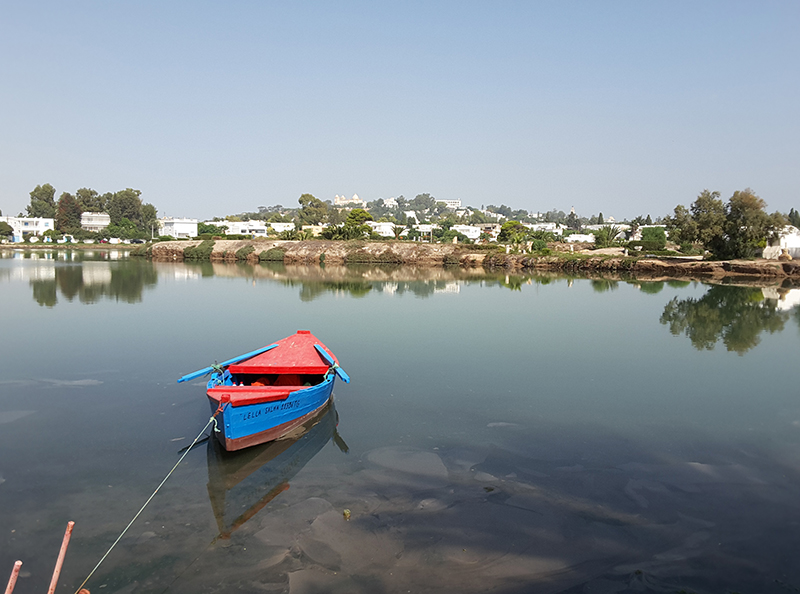La prodigiosa vista y el fino oído de los Mauri y su utilización ocasional en la inteligencia militar y en la exploratio. A propósito de Julio Africano, Cesti VII, 16.
Abstract
Un fragmento del escritor Julio Africano (Cesti VII, 16) menciona la extraordinaria capacidad visual y auditiva que tenían los mauritanos. Esto les hacía aptos para los trabajos de vigilancia y exploración durante la guerra. También menciona la costumbre que tenían de dormir con un trozo de madera debajo de la cabeza, y poniendo la oreja cerca de un agujero, para estar vigilantes y percibir el sonido de los que se acercan o de las armas. Comenta algunas extrañas formas de camuflaje para descubrir conversaciones secretas del enemigo.
Riferimenti bibliografici
Austin N. J. E., Rankov N. B. (1995), Exploratio. Military and political intelligence in the Roman world from the Second Punic War to the battle of Adrianople, London: Routledge, 1995.
Baillie Reynolds P.K. (1923), The troops quartered in the castra peregrinorum, Journal of Roman Studies 13, 168-189.
Bennet Ch. E. (1925), Frontinus: The Stratagems and the Aqueducts of Rome, London: Heinemann.
Birley E. (1966), Military Intelligence in the Historia Augusta, en: Bonner Historia-Augusta-Colloquium 1964/1965, Bonn, 35-42.
Coulston J.C. (1988), Trajan’s Column: The Sculpting and Relief content of a roman propaganda Monument,Thesis submitted for the degree of Ph. D. at the University of Newcatgel upon Tyne.
Cupcea G. (2009), The missions of the soldiers in the limes provinces. Frumentarii in Dacia, en: O. Ţentea Y I. C. Opriş (eds.), Near and Beyond.The Roman Frontiers, Bucharest: National History Museum of Romania, 305-314.
Habas R. E. (1994), The Jewish origin of Julius Africanus, Journal of Jewish Studies, 44, 86-91.
Kagan K. (2011), Spies Like Us: Treason and Identity in the Late Roman Empire, en R.W. Mathisen, D. Shanzer (eds.), Romans, Barbarians, and the Transformation of the Roman World. Cultural Interaction and the Creation of Identity in Late Antiquity, Farnham: Asghate, 2011, 161-173.
Lepper F., Frere, S. (1988), Trajan’s Column. A new Edition of the Cichorius Plates. Introduction, Commentaty and Notes, Gloucester, Alan Sutton.
Liberati A. M., Silverio E. (2010), Servizi segreti in Roma antica. Informazioni e sicurezza dagli initia Urbis all’impero universale, Roma: «L’Erma» di Bretschneider.
Panciera S. (2006a), Genio castrorum peregrinorum, en Id., Epigrafi, Epigrafia, Epigrafisti. Scritti vari editi e inediti (1956-2005) con note complementari e indici, Roma: Quasar, 1421-1439.
Panciera S. (2006b), Signis legionum. Isegne, immagini imperiali e centuriones frumentarii a peregrinis, en Id., Epigrafi, Epigrafia, Epigrafisti. Scritti vari editi e inediti (1956-2005), Roma: Quasar, 1453-1464.
Panciera S. (2006c), Castra peregrina. Vecchi e nuovi documenti epigrafici, en Id., Epigrafi, Epigrafia, Epigrafisti. Scritti vari editi e inediti (1956-2005) con note complementari e indici, Roma: Quasar, 1471-1482.
Perea Yébenes S. (2017), Tronos ensangrentados (ca. 251-350). Quiebra del sacramentum militar y traición: de la securitas Augusti al crimen maiestatis, en: L. Montecchio (ed.), Tradimento e traditori nella Tarda Antichità, Perugia: Edizioni Graphé, 1-34.
Rankov N.B. (1990), Frumentarii, the castra peregrina and the Provincial officia, Zeitschrift für Papyrologie und Epigraphik 80, 1990, 176-182.
Santos Yanguas N. (1977), El servicio policial secreto romano en el Bajo Imperio según Amiano Marcelino, Memorias de Historia Antigua, 1, 127-139.
Sheldon R.M. 2005, Intelligence Activities in Ancient Rome, London – New York: Frank Cass.
Sinnigen W. J. (1959), Two Branches of the Roman Secret Service, The American Journal of Philology, 80.3, 238-254.
Spaul J. E. H. (1994), Ala². The Auxiliary Cavalry Units of the Pre-Diocletianic Imperial Roman Army, Andover: Nectoreca Press.
Speidel M.P. (1983), Exploratores. Mobile Elite Units of Roman Germany, Epigraphische Studien 13, 63-78.
Thee C. R. (1984), Julius Africanus and Early Christian View of Magic, Tubingen: J.C. B. Mohr (Paul Siebeck).
Vieillefond J-R. (1970), Les ‘Cestes” de Julius Africanus. Étude sur l’Ensemble des fragments, avec édition, traduction et commentaires, (Publications de l’Institut français de Florence. Collection d’études d’histoire, de critique et de philologie, ser. 1, 20), Paris: Librairie Marcel Didier et Firenze: Edizioni Sansoni Antiquariato, 1970.
Wallraff M., Mecella L. (Eds.) (2009), Die Kestoi des Julius Africanus un ihre Überlieferung, (Texte und Untersuchungen zur Geschichte der altchristlichen Literatur, 165), Berlin: Walter de Gruyter, 2011.
Wallraff M., Roberto U., Pingéra K. (2007), Iulius Africanus. Chronographie. The Extant Fragments, translated by W. Adler, (Die griechischen christlichen Schriftsteller der ersten Jahrhunderte), Berlin: Walter de Gruyter, 2011.
Wallraff M., Scardino C., Mecella L., Guignard Chr. J.-D. (Eds.) (2012), Iulius Africanus, Cesti. The Extant Fragments. Translaled by Adler W. (Die griechischen christlichen Schriftsteller der ersten Jahrhunderte), Berlin/Boston: Walter de Gruyter.
Copyright (c) 2020 Sabino Perea Yébenes

Questo lavoro è fornito con la licenza Creative Commons Attribuzione - Non opere derivate 4.0 Internazionale.
Gli autori che pubblicano su questa rivista accettano le seguenti condizioni:
Gli autori mantengono i diritti sulla loro opera e cedono alla rivista il diritto di prima pubblicazione dell'opera, contemporaneamente licenziata sotto una Licenza Creative Commons - Attribuzione - Non opere derivate 4.0 Internazionale che permette ad altri di condividere l'opera indicando la paternità intellettuale e la prima pubblicazione su questa rivista.
Gli autori possono aderire ad altri accordi di licenza non esclusiva per la distribuzione della versione dell'opera pubblicata (es. depositarla in un archivio istituzionale o pubblicarla in una monografia), a patto di indicare che la prima pubblicazione è avvenuta su questa rivista.
Gli autori possono diffondere la loro opera online (es. in repository istituzionali o nel loro sito web) prima e durante il processo di submission, poiché può portare a scambi produttivi e aumentare le citazioni dell'opera pubblicata (Vedi The Effect of Open Access).








